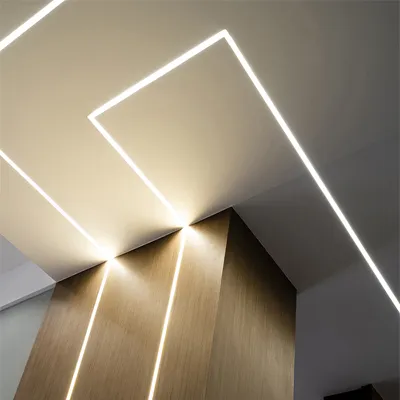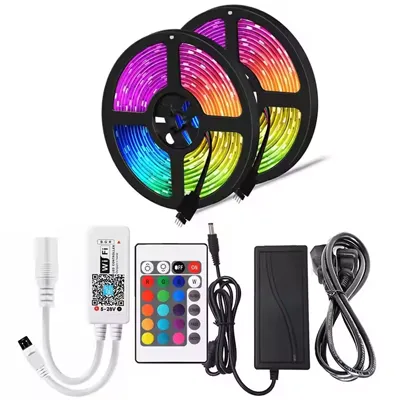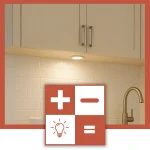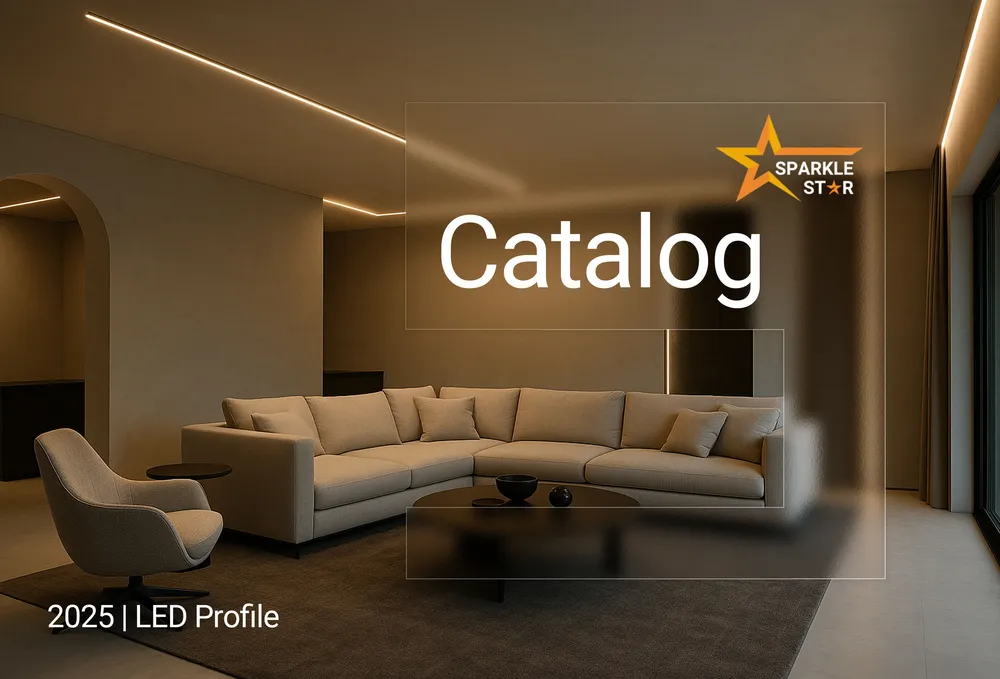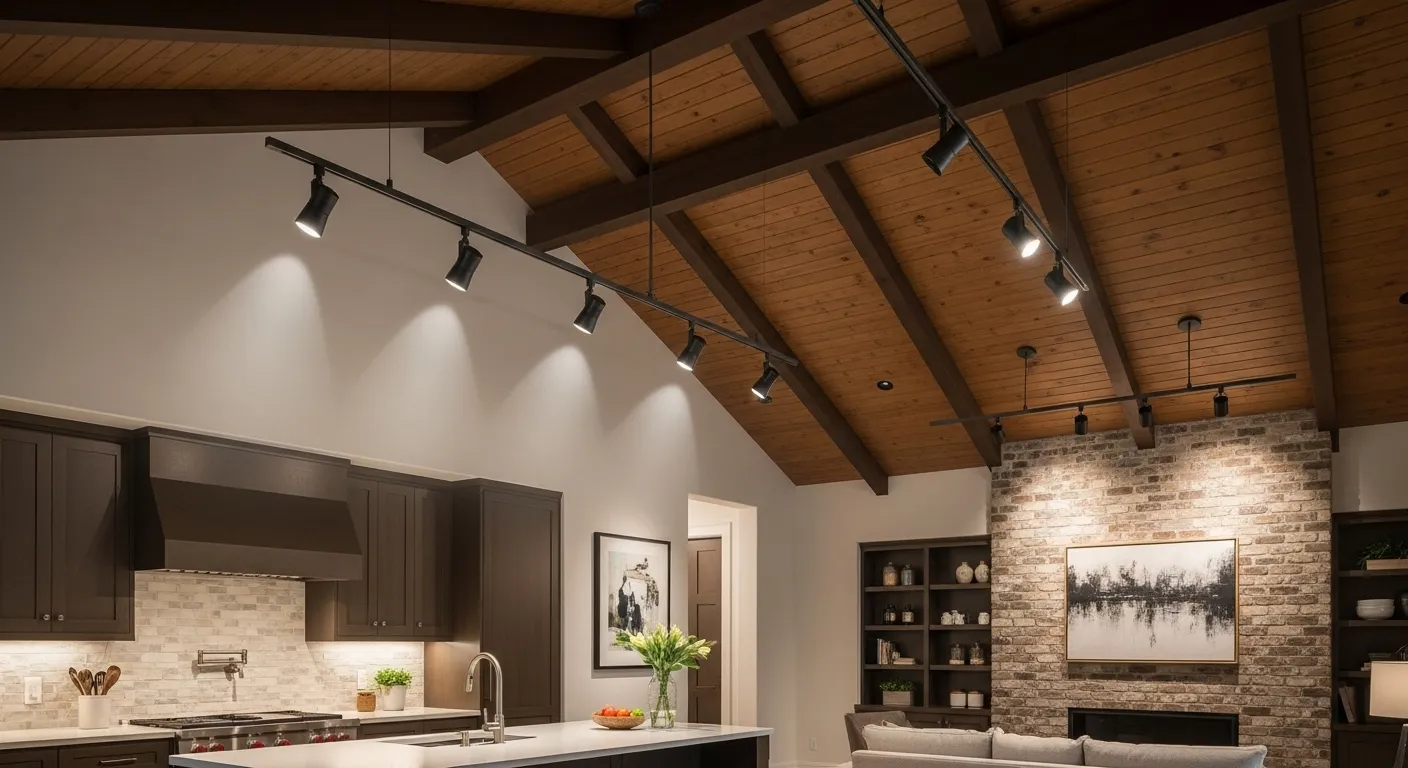
The GU10 and MR16 spotlight look nearly identical. This deceptive resemblance makes the GU10 vs MR16 choice a direct cause of countless lighting failures. One is a self-contained unit that connects to mains voltage. The other is part of a system requiring an external transformer, the component responsible for most malfunctions. Mistaking the two leads to flickering, buzzing, or dead circuits. This guide provides the technical distinction necessary to prevent these problems.
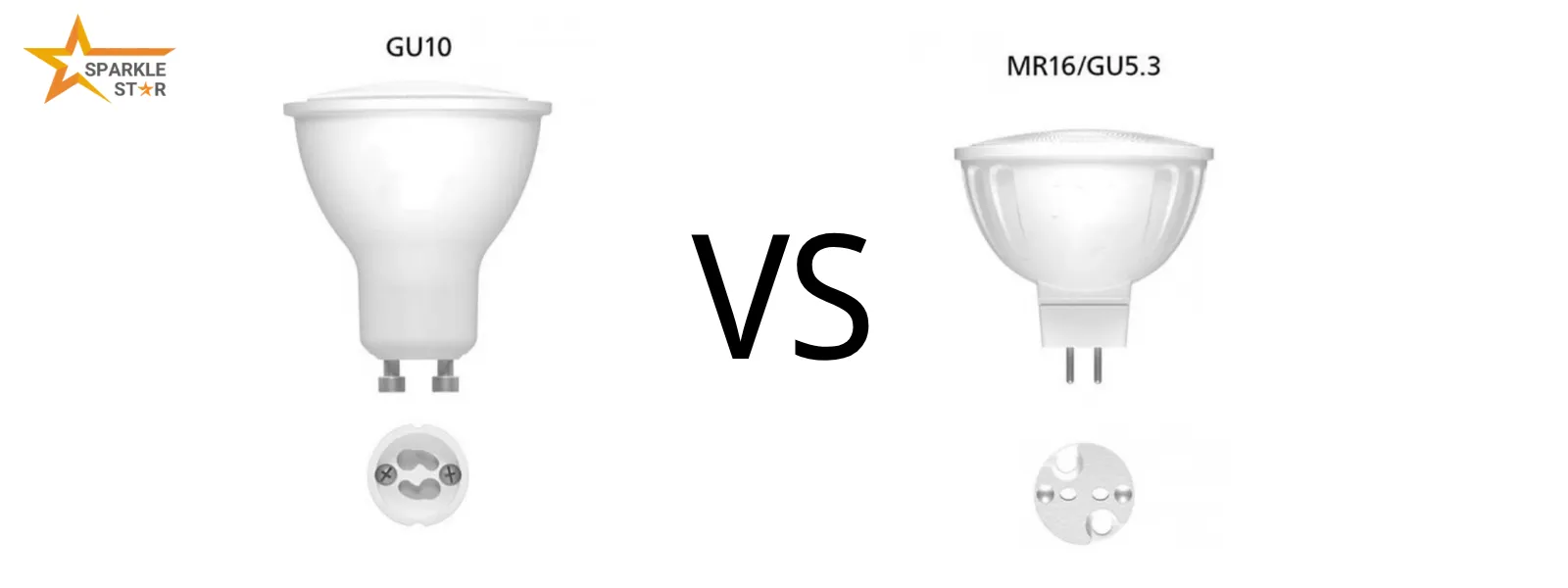
What is a GU10 Bulb?
A GU10 bulb is defined by its base, the part that connects to the light fixture. This base dictates the design and function of the entire system it operates within.
Anatomy of a Mains Voltage System
The GU10 base features two thick, short pins spaced 10mm apart, each capped with a distinctive T-shaped lug or "foot." This design is not arbitrary; it allows the bulb to be inserted and twisted into the socket, a mechanism known as a twist-and-lock fitting. This action creates a secure physical and electrical connection that resists vibration and ensures consistent contact.
Electrically, GU10 bulbs are engineered for direct connection to standard mains voltage, such as 120V in North America or 230V in Europe. All the complex electronics required to convert this high AC voltage into the precise low DC voltage needed by the LED chip, a component called a driver, are miniaturized and integrated directly into the housing of the bulb itself. This all-in-one design is the GU10's primary strength. Installation is simplified to connecting a single fixture to the main power supply, and there are fewer external components in the system that can fail.
Common Applications and Strengths
The simplicity and reliability of the GU10 system make it the standard choice for the majority of new indoor lighting projects. It is specified for general downlighting in residential living rooms, hallways, and kitchens. It is also heavily favored in commercial spaces like offices and retail stores, where ease of maintenance and reduced service calls are primary business considerations.

What is an MR16 Bulb?
The term MR16 describes the shape and size of the lamp, not its base. It stands for "multifaceted reflector," with the number "16" indicating the bulb's diameter is 16 eighths of an inch, or 2 inches (approximately 50mm). This reflector is designed to precisely collect and direct light, a legacy of its origin in slide projectors where optical control was paramount.
Anatomy of a Low Voltage System
While the MR16 shape can be paired with several base types, in common usage it is almost always fitted with a GU5.3 base. This base has two thin, sharp pins spaced 5.3mm apart that push directly into a socket.
This GU5.3 base signifies a low-voltage system, typically operating at 12V. Because building wiring supplies a much higher mains voltage, an MR16/GU5.3 bulb cannot be connected directly. It requires a separate, external component called a transformer to "step down" the voltage. This external component is the system’s defining characteristic and its greatest liability. It introduces an additional layer of cost, a point of electrical failure, and a significant source of installation complexity that is entirely absent in the GU10 system.
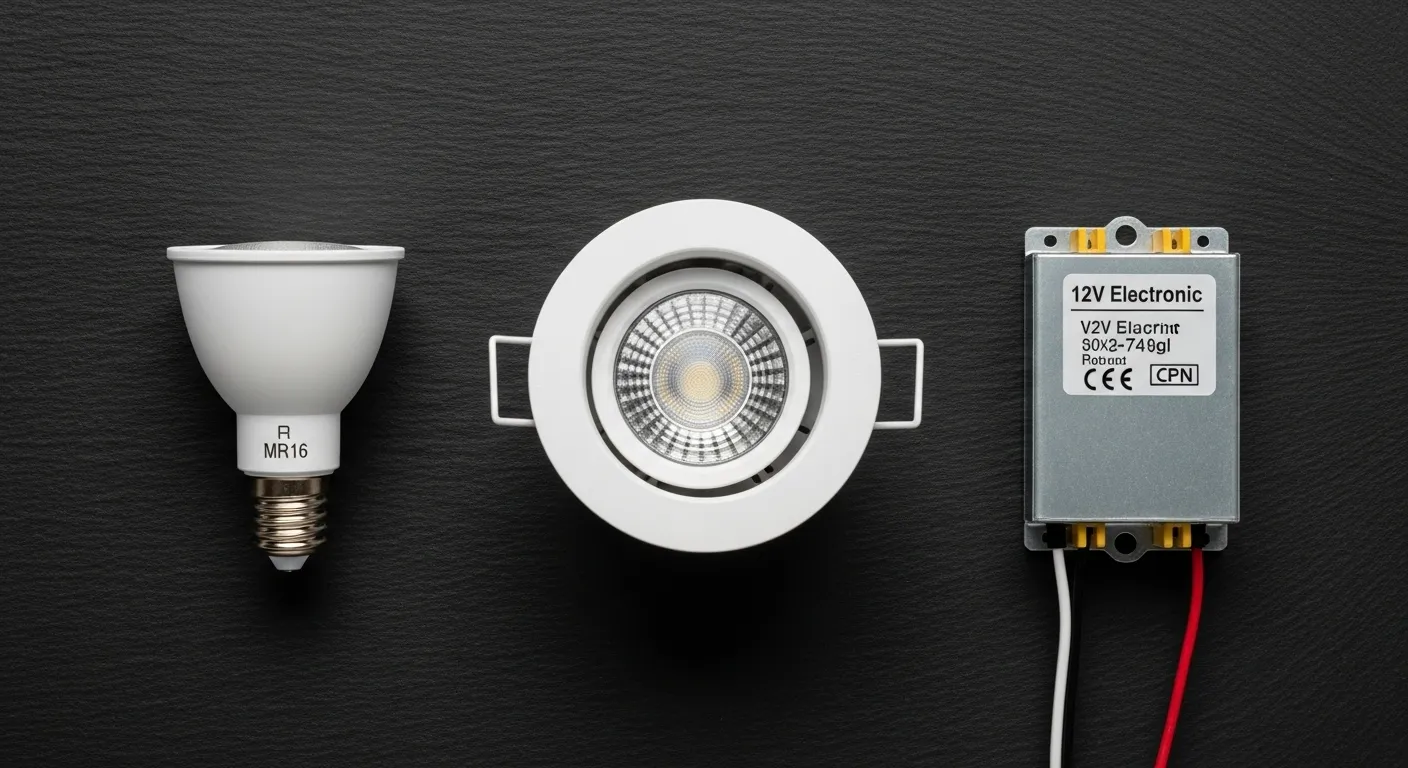
Common Applications and Strengths
Despite its complexity, the MR16 system is retained in specific fields where its unique characteristics are advantageous. The 12V system is the established standard for landscape lighting, as the low voltage is considered safer for outdoor, in-ground fixtures. Its heritage in optical control also makes it a tool for professionals in museums, galleries, and high-end retail, where precisely shaped, narrow beams of light are required to accent products or artwork.

Head-to-Head Comparison: GU10 vs. MR16
The fundamental differences in electrical architecture lead to distinct practical outcomes in installation, cost, and long-term performance.
Feature | GU10 System | MR16 (GU5.3) System |
|---|---|---|
Operating Voltage | Mains Voltage (e.g., 120V/230V) | Low Voltage (Typically 12V) |
External Transformer | Not Required (Driver is integrated) | Required |
Installation | Simple: Fixture wires directly to mains. | Complex: Transformer must be wired between mains and fixture. |
Reliability | High: Fewer components to fail. | Moderate to Low: Transformer is a common failure point. |
Troubleshooting | Linear: Test the bulb, then the fixture/switch. | Complex: Must diagnose bulb, fixture, and transformer. |
Installation Complexity and Cost
A GU10 installation is straightforward for a qualified electrician. An MR16 installation requires the additional labor of sourcing, placing, and wiring a transformer for each fixture or group of fixtures. This component adds a direct cost to the project materials and increases the time required for installation.
Long-Term Reliability and Maintenance
The reliability of a system is inversely related to the number of its critical components. The GU10 system is inherently more reliable because it has one less point of failure. When a GU10 bulb stops working, the problem is almost always the bulb itself. When an MR16 bulb stops working, the cause could be the bulb, a loose pin connection, a failed transformer, or the wiring between these components. This makes maintenance more time-consuming and costly.
Physical Size and Fixture Compatibility
The transition to LED technology has affected the physical dimensions of both bulb types. The need to house internal drivers and heat sinks often makes modern LED GU10 and MR16 bulbs longer than the halogen bulbs they replace. Older recessed "can" fixtures may be too shallow, preventing the new bulb from sitting flush. It is therefore necessary to measure the depth of existing fixtures before purchasing any LED replacement to ensure a proper fit.
Challenges in Upgrading MR16 Systems to LED
Upgrading a 12V halogen system to LED is rarely a simple bulb-for-bulb swap. The introduction of modern, low-power electronics into an electrical infrastructure designed decades ago often leads to immediate and frustrating performance issues. These problems are not defects in the LED bulb, but symptoms of a fundamental technological conflict.
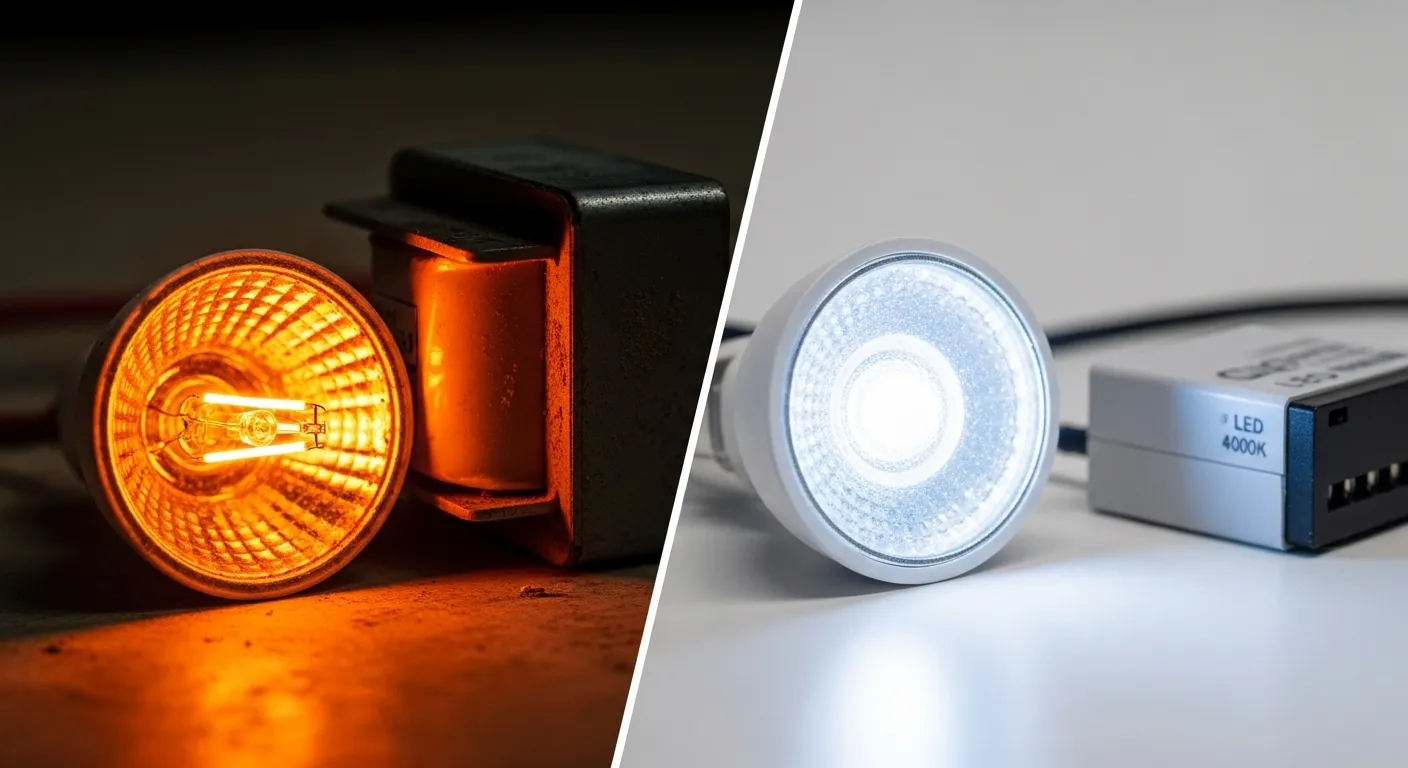
Transformer Compatibility Issues
The most common source of failure is the existing halogen transformer. These components, often hidden in the ceiling void, were engineered with two assumptions that modern LEDs violate.
First is the minimum load requirement. Older electronic transformers need to power a device that draws a significant amount of electricity, typically 20 watts or more, to function stably. A 50-watt halogen bulb easily meets this demand. A 7-watt LED replacement does not. When the load drops below this threshold, the transformer’s internal circuitry can become erratic, causing the very flickering and buzzing that homeowners report.
Second is the load type mismatch. A halogen bulb is a simple resistive load, much like a toaster element. Its power draw is consistent. An LED bulb is a sophisticated electronic device with rectifiers, capacitors, and integrated circuits. When this complex, low-power load is connected to a transformer expecting a simple, high-power one, the result is often unpredictable behavior, from strobing effects to a complete failure to turn on.
Expert Troubleshooting Tip
If your new MR16 LED bulbs are flickering or not working, you can perform a quick diagnostic. Safely reinstall one of the old halogen bulbs into the circuit. If the halogen bulb works correctly, it confirms the transformer is still functional but is simply incompatible with the low power draw of your new LED bulbs. If the halogen bulb also fails to light, the transformer itself has likely failed and requires replacement.
The Difficulty of Dimming a 12V System
Achieving smooth, flicker-free dimming on an MR16 system is notoriously difficult. Success depends on the perfect harmony of a three-part "compatibility stack": the LED bulb, the 12V transformer, and the dimmer switch on the wall. A failure or incompatibility at any point in this chain will compromise performance.
For example, the wall dimmer must be compatible with the type of transformer in the ceiling. Many older dimmers are "leading-edge" types, which work poorly with the electronic transformers common in MR16 systems and are a primary cause of noise and flicker.
This contrasts sharply with the GU10 system, where dimming is a much simpler two-part equation: a dimmable bulb and a modern, LED-compatible dimmer switch. By eliminating the external transformer, the GU10 architecture removes the most problematic variable from the dimming equation.
The Definitive Solution for Your Lighting Project
Based on the technical realities and common points of failure, a clear set of recommendations emerges for any lighting project.
For New Construction and Renovations
For any new indoor installation, the verdict is unequivocally to use the GU10 system. The superior reliability, simpler installation, and freedom from transformer compatibility issues make it the professional standard for modern construction. This approach reduces initial labor costs and minimizes long-term maintenance liabilities.
For applications requiring maximum flexibility, such as over kitchen islands or in multi-use living spaces, specifying a track lighting system that utilizes GU10-based heads is the most intelligent and forward-thinking solution. This allows for the easy addition, removal, or repositioning of lights without any need for re-wiring, providing adaptable illumination as the needs of the space evolve.
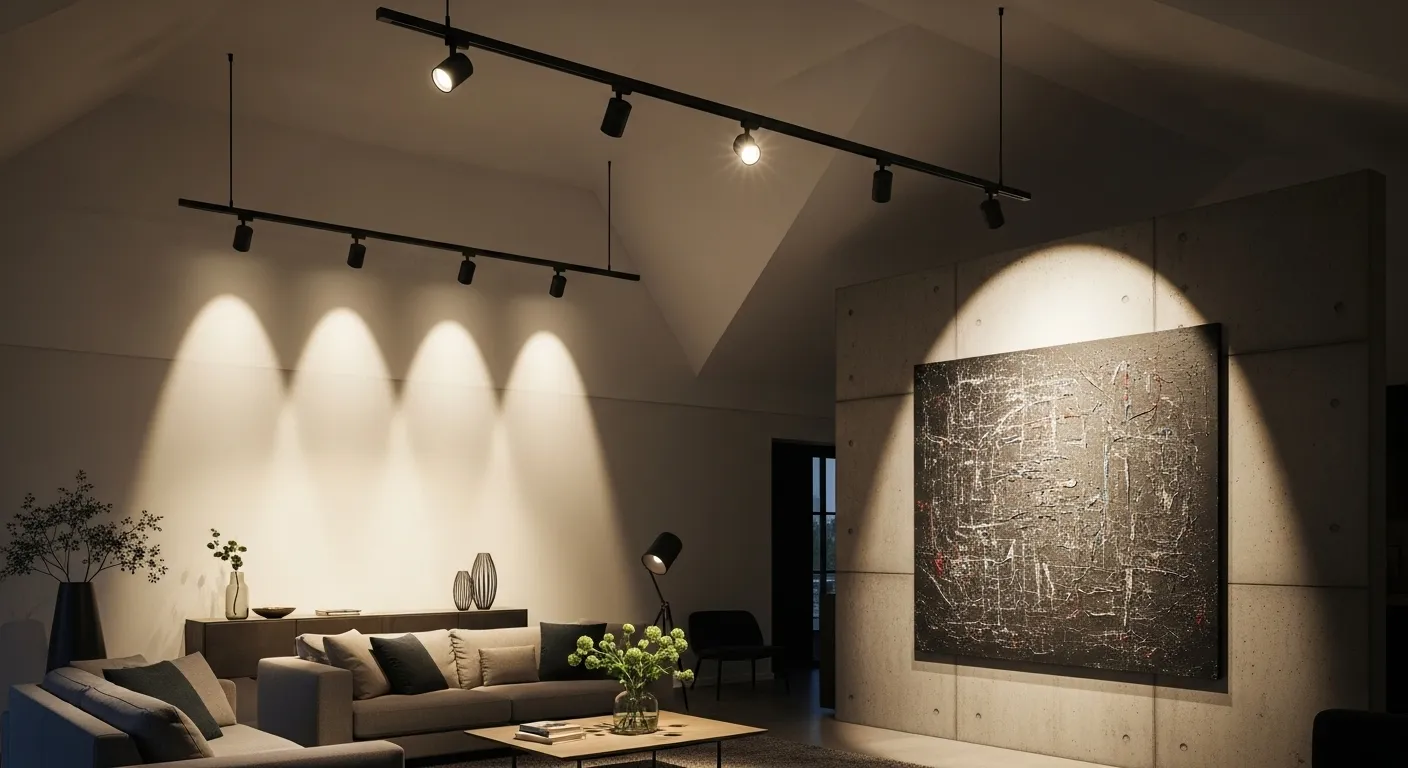
For Upgrading Existing Halogen Spotlights
The most robust and permanent solution for an aging 12V MR16 system is to invest in a full conversion to GU10. This involves having a qualified electrician remove the old GU5.3 lampholders and, most importantly, completely remove the legacy transformers from the circuit. New GU10 lampholders are then wired directly to the mains supply. While this has a higher upfront cost, it permanently eliminates the root cause of all potential flickering, dimming, and reliability problems.
Attempting a direct swap of MR16 halogen bulbs for LEDs without changing the transformers is a high-risk path. It often results in the very issues this guide details and should be considered a temporary fix at best, not a reliable, long-term upgrade.
For Specialist and Niche Applications
The 12V MR16 system retains its standing in two specific, professional-grade domains.
- Landscape Lighting: The low-voltage operation provides a tangible safety advantage for fixtures installed outdoors, in the ground, and exposed to moisture.
- Museum and Gallery Lighting: For applications demanding the highest degree of artistic precision, the MR16 ecosystem still offers a wider selection of specialized bulbs with extremely narrow beam angles and superior color rendering. In these controlled environments, lighting designers can specify a complete, fully compatible system of professional-grade bulbs, drivers, and controls. For these projects, high-specification track lighting is often employed to allow for the precise aiming and positioning required.
Conclusion
The choice in the GU10 vs MR16 debate is not one of preference, but of engineering. It is a decision between a simple, self-contained mains-voltage system and a complex, component-based low-voltage system. The technical evidence and real-world results lead to a clear conclusion.
For the overwhelming majority of indoor applications, the GU10 system is the superior choice. Its inherent reliability, straightforward installation, and predictable performance in the LED era make it the intelligent standard for both new projects and comprehensive upgrades. The complexities and legacy compatibility issues of the 12V MR16 system, while manageable for professionals in niche fields like landscape or museum lighting, represent an unnecessary risk and maintenance burden for general use.
Ultimately, equipping yourself with this knowledge moves you beyond a simple bulb-for-bulb decision. It allows you to design a complete lighting system, such as a versatile track lighting installation, that is not only built on the right foundation but is also robust, adaptable, and guaranteed to perform correctly for years to come. You now have the technical understanding to avoid common pitfalls and make a truly confident and professional choice.
Frequently Asked Questions
Can you change an MR16 fixture to a GU10?
Yes, and this conversion is the most reliable method for upgrading a 12V system. The process requires a qualified electrician to remove the original GU5.3 lampholder and its associated 12V transformer. A new GU10 lampholder is then wired directly to the mains voltage supply, permanently eliminating the source of most compatibility problems.
Are halogen MR16 bulbs being discontinued?
Yes. In many regions, including the UK and the European Union, regulations have phased out the sale of inefficient 12V halogen bulbs like the MR16. This legislative push towards energy efficiency further solidifies LED as the current standard and makes investment in new halogen-based systems impractical.
What is the difference between a GU10 and a GU24 base?
The difference lies in their pin configuration and intended use. A GU10 base has two pins spaced 10mm apart for spotlights. A GU24 base, primarily used in North America, has two larger prongs spaced 24mm apart. It was designed for dedicated energy-efficient fixtures to prevent the use of older incandescent bulbs and is not interchangeable with GU10.
Can I just plug an MR16 LED bulb into my old halogen fixture?
While the bulb may physically fit, this action is the direct cause of most upgrade failures. The original transformer in the halogen fixture is typically not compatible with the low power draw of an LED bulb, which leads to flickering, noise, or the bulb not turning on at all. A successful upgrade requires replacing the transformer with a compatible LED driver or converting the system to GU10.


